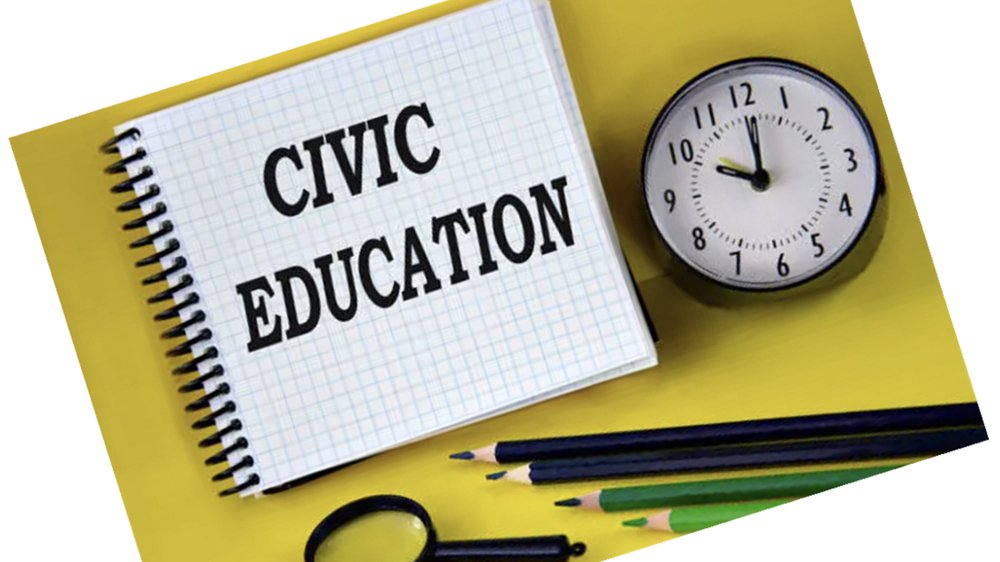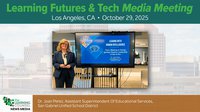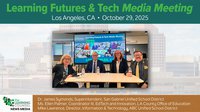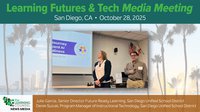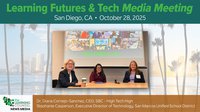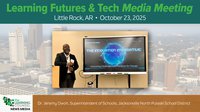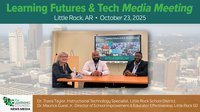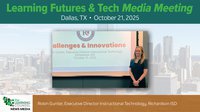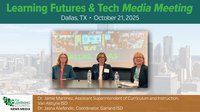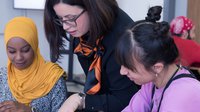Despite civics education being a mandatory graduation requirement in many states, there is a significant gap in student engagement and understanding. National assessments reveal troubling statistics: a substantial number of students lack proficiency in civics, with only 24 percent meeting or exceeding proficient standards (NAEP, 2018). Furthermore, many students struggle with basic knowledge of government institutions, functions, and civic responsibilities. This gap between the widespread teaching of civics and students’ ability to retain and apply what they have learned highlights a critical need for improvement. The Civics Collection, for educators and students in grades 6-12, seeks to bridge this divide by providing educators with dynamic tools that make civics come alive in the classroom, ultimately helping students develop a meaningful understanding of their roles as active citizens in a democracy and making the complexities of government and constitutional principles accessible and intriguing.
Building the PBS LearningMedia Civics Collection
The Civics Collection is funded by the Corporation for Public Broadcasting in response to the need for more engaging civics education to foster a civically informed citizenry, something that is essential for a thriving democracy. It was developed by GBH Education, a division of Boston-based public media leader GBH. The team’s mission is to research, develop, and distribute educational content and services for the equitable learning and development of young people and the adults in their lives.
The development and production of the Civics Collection on PBS LearningMedia involved an iterative process with multiple steps and inputs throughout. First, collection and resource design was led by the GBH social studies team, composed of veteran middle and high school social studies educators with practical insight into what is helpful for teachers and engaging for students. Its design and development drew on learnings from the award-winning, research-proven, and well-used U.S. History Collection on PBS LearningMedia recently produced by GBH.
Prior to producing a single resource, GBH conducted research into the current landscape for civics programming, including:
- Review of 15 state curriculum frameworks on civics
- Review of 15 organizations providing digital resources for civics education
- Selection and engagement of advisory boards:
- Civics leadership council (22 scholars)
- Educator advisory group (17 teachers from across the United States)
- Youth advisory group (17 middle and high school students from across the United States)
Based on the landscape review and other background research, and with input from the advisory groups, GBH created a foundational Civics Framework that included a rubric for resource selection and an organizing structure, or “table of contents,” featuring topics, subtopics, and civics skills. Additional formative research with the Educator and Youth Advisory Groups led to multiple iterations on the collection organization and plans for new resources and types of teacher support materials. Formative research on each resource type was conducted with educators and students and the production of new media resources (e.g., interactive maps, timelines, images, self-paced lessons, and video) benefitted from multiple rounds of internal review and research with teachers and students. It is no surprise that educators who use resources from the collection report that they can tell teachers were integrally involved in their development.
Based on the landscape review and other background research, and with input from the advisory groups, GBH created a foundational Civics Framework that included a rubric for resource selection and an organizing structure, or “table of contents,” featuring topics, subtopics, and civics skills. Additional formative research with the Educator and Youth Advisory Groups led to multiple iterations on the collection organization and plans for new resources and types of teacher support materials.
Formative research on each resource type was conducted with educators and students and the production of new media resources (e.g., interactive maps, timelines, images, self-paced lessons, and video) benefitted from multiple rounds of internal review and research with teachers and students. It is no surprise that educators who use resources from the collection report that they can tell teachers were integrally involved in their development.
Engaging and Inspiring Students as Civic Actors
Informed by the research and development work noted above, GBH defined civics broadly in the Civics Collection; resources address, but also go beyond, the traditional definition that focuses on leaders, government institutions, and political processes. Instead, the goals of the Civics Collection are to engage youth while equipping teachers with the tools to help students gain:
Relevant civic knowledge, including foundational concepts of civic life, politics, and government
Civic understanding through applied historical and present-day examples to illustrate civic processes and procedures
Preparation for civic engagement and participation in civic affairs through real-world examples, first-person stories, and student-centered media
Civic skills, such as Engaging in Civil Discourse and Building Media Literacy, to support student understanding and develop the practices involved in civic engagement and action
The collection is not intended to duplicate or replace a basic civics textbook or comprehensive curriculum; we believe, however, that to create an informed citizenry, we must engage students with relevant civic knowledge and practical understanding that extends beyond textbook learning. The Civics Collection provides supplemental tools for teachers to enhance their curriculum and engage students in civics education in “minds-on” and interactive ways, using media to spark interest and help make connections to students’ lives.
Innovative resources play a vital role in enhancing civics education, and we’ve incorporated many into the Civics Collection. One new youth-forward video series produced at GBH is GAME CHANGERS, designed to actively engage students in the process of understanding their civic rights. Students analyze personal stories of civic engagement and identify the constitutional or civic right reflected in each story, exploring how citizens exercised that right in a modern-day context, and identify the civic skills needed in the process. GAME CHANGERS makes the case that understanding and exercising one’s rights is as vital today as it was when those rights were enshrined in the Constitution over 200 years ago and is crucial to ensuring our democracy lives up to its highest potential for all Americans.
Innovative resources play a vital role in enhancing civics education, and we’ve incorporated many into the Civics Collection. One new youth-forward video series produced at GBH is GAME CHANGERS, designed to actively engage students in the process of understanding their civic rights. Students analyze personal stories of civic engagement and identify the constitutional or civic right reflected in each story, exploring how citizens exercised that right in a modern-day context, and identify the civic skills needed in the process. GAME CHANGERS makes the case that understanding and exercising one’s rights is as vital today as it was when those rights were enshrined in the Constitution over 200 years ago and is crucial to ensuring our democracy lives up to its highest potential for all Americans.
Another new, original video series, CIVICS EXPLAINERS, focuses on five different concepts that are central to understanding our constitutional democracy; teachers and students might have some notion of what liberty, equality, and justice mean, but these videos dig deeper, providing relatable definitions, historical context, connections to the founding documents, and concrete modern-day examples. Hosted by members of the Civics Leadership Council, these “explainer” videos help students to connect complex ideas to real-world applications through engaging video content.
YOUTH STAND UP, another original video series, emphasizes the importance of youth involvement in civic activities and demonstrates that individuals of all ages can shape our society. Students are not likely to be familiar with these young civic leaders, past and present, but they have carried out impactful civic action in their communities. These videos cover a variety of different civic issues, from anti-bullying to river conservation to affordable housing to desegregation. Each video is designed to inspire students to see themselves as civic actors and to demystify the process of civic action by including information on how the person got started, the civic goal and action they chose, the obstacles they overcame, and what they ultimately accomplished.
In addition to new, original videos, new interactive lessons and interactive timelines, maps, and images teach important civics content and skills through student-paced, exploration-focused, interactive content.
In the interactive lesson Influences on the U.S. Constitution, students learn about the different thinkers and writing that influenced the Framers as they constructed the Constitution. These influences included Ancient Greece and Rome, Enlightenment philosophers, the Haudenosaunee Confederacy, and state constitutions.
The History of Voting Rights, an interactive timeline, teaches students about the evolution of voting rights, starting with the ratification of the U.S. Constitution and ending with current day efforts to both improve voting access and to suppress voting rights.
- Building media literacy is supported in this interactive, Media Mastery: Empowering Students to Identify Bias in the Free Press. Students learn to evaluate fictional media stories using the four key criteria of objective media reporting—word choice, context, evidence, and multiple perspectives.
Developing essential civics skills is crucial for students, not only to understand democratic principles but also to actively participate in society. Our emphasis on cultivating these skills through independent student activities and media content ensures that students are well-prepared to engage meaningfully in their communities.
Six civics skills are elevated in the Civics Collection, and every civics resource is aligned to the most relevant skill. Independent Student Activities (ISA) accompany many of the civics resources, and each ISA focuses on the development and practice of the civics skill supported by the resource media.
- Each resource is designed around an Essential Question that focuses on an enduring or debatable civics-related question. The media and student-facing questions and activities help students analyze and answer the essential and supporting questions for themselves.
- Where the media allows, resources promote multiple perspectives on a topic or issue.
- Each resource is firmly grounded in the nation’s founding documents: the Declaration of Independence, the Constitution, or the Bill of Rights. Teaching Tips identify the founding documents on which the topic and essential question are based.
- Independent Student Activities focus on developing a civics skill through a step-by-step guide that incorporates the media content and provides additional civic knowledge for students where needed.
- Many resources include student vocabulary to teach important civics terminology raised in the media or other text.
- After Viewing and Taking It Further questions and activities often suggest ways students can build connections between the past and present.
Providing Tools that Teachers Need
Teachers require tools that not only save time but also enhance learning, and the Civics Collection is specifically designed to meet these needs efficiently and effectively. It organizes resources to provide easy access to support materials, helping educators streamline their preparation. By integrating media, the collection brings civics topics to life, enabling students to make real-world connections and gain a deeper understanding of the role of government and citizenship. Moreover, the comprehensive approach of the Civics Collection addresses both civics content and skills, focusing on the importance of understanding government institutions as well as the active role of everyday citizens in a democratic society.
Consistent support materials mean that teachers will quickly become familiar with the collection’s structure and format. Every resource is accompanied by Teaching Tips for teachers and Discussion Questions for students, and many provide additional support materials, including independent student activities and background readings. Overall, our goal is not to tell students what to think, but to provide teachers and students with tools that teach them how to think. There are several ways that this is accomplished in the collection resources:
Supporting Diverse Learners
Supporting diverse learners is central to our work at GBH. All video resources are closed captioned and accompanied by a transcript, and all images include alt text. Particular focus is paid to defining key terms in interactives, interactive (self-paced) lessons, and student background readings. All interactive lessons will soon have Spanish translations and text-to-speech capability. Student background readings and independent activities will also be available in Spanish.
What’s Next? The Future of Civics Education is Looking Bright
When fully produced and completed at the end of 2024, the Civics Collection will have more than 180 resources curated and produced by GBH and including media from a range of public media and other partners.
GBH is confident that the Civics Collection will support and further our goal of teaching the next generation of leaders the fundamentals of our constitutional democracy as well as the many different ways that everyday citizens have contributed to the aspirational goal of creating “a more perfect Union.” Civics education must extend beyond an election year and the months directly before the election. It’s almost too late if that’s when people start tuning in.
“Self-government requires far more than voting in elections every four years. It requires citizens who are informed and thoughtful, participate in their communities, are involved in the political process, and possess moral and civic virtues.”
—Campaign for the Civic Mission of Schools
Effective civics education is a cornerstone of a functioning democracy. We hope the Civics Collection will be a powerful tool in preparing informed and engaged citizens. Explore the Civics Collection today and see how these resources can enhance your teaching and inspire your students to become active participants in our democracy. We also provide webinars to support teachers in integrating these resources into their instruction. You can find recordings of the first two on the GBH Education YouTube Channel: Civil Conversations: How to Model Civil Discourse with Your Students and Dynamic Interactives for Teaching Civics. Please join our mailing list to hear about upcoming webinars and new product releases.
About the author
Susan Wilkins is the Director of Social Studies Curriculum & Instruction for GBH and PBS LearningMedia. She heads social studies work in the GBH Education Department, ranging from leading development on the U.S. History Collection and the new Civics Collection to the creation of learning resources to accompany AMERICAN EXPERIENCE and FRONTLINE films to developing a new Social Studies curriculum hierarchy and support materials templates with PBS.
She joined GBH after 20 years teaching high school history and was a Clinical Instructor of Methods-History, and Supervising Practitioner with the Newton Teacher Residency Program.
Ms. Wilkins holds an M.S. in Education from Northwestern University and an A.B. in history from Harvard University.

